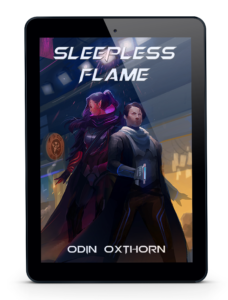I would like to preface this by stating that while this is how *I* personally use the pronoun “They” in reference to my Nonbinary characters, it is by no means the one and only absolute *RIGHT* way of doing it. The purpose of this article is to give a starting point to authors who are a bit uncertain about the usage within the gender spectrum.
Since the purpose of this article is NOT to educate you on Nonbinary people, I will refer you to a concise Wikipedia article to get you started, and feel free to expand your research on your own time:
https://en.wikipedia.org/wiki/Genderqueer
There you will also find the most commonly gender-neutral pronouns used today. Here, I am going to be talking about the use of “They” as a singular pronoun.
NONBINARY IS NOT AN ULTIMATE DEFINITION
Please be aware that there is no “catch-all” phrasing to represent every degree within the nonbinary spectrum. While this article provides a decent fundamental to start including gender diverse characters in your work, please do not consider this the be-all-end-all of representation. Nonbinary people have extremely different identities.
The use of the singular They tends to incite a knee-jerk reaction to many authors and editors, despite its use being referenced for quite some time. Language is fluid and ever changing, isn’t it wonderful?
While I have a lot of Nonbinary characters in my works, I also use the singular “they” to refer to nondescript encounters that are not prominent to the story, or don’t need to be fleshed out in order to make the story flow: i.e. shop/innkeepers, minion fight encounters, security personnel, etc.
Just like with he/she, take care when drafting dialogue or writing a paragraph with nothing but the same pronoun, especially when one or more characters are involved.
When you need to make a distinction, use descriptors on the character to communicate which person you are referring to. Using the character’s name frequently is an obvious solution, but it can disrupt the flow of dialogue or action:
“Balthazaar took Balthazaar’s comb from the shelf and brushed back Balthazaar’s glorious mane.”
You can stray away from this a little bit by strategically removing possessive nouns, but it won’t fix everything:
“Balthazaar took the comb from the shelf and brushed back Balthazaar’s glorious mane.”
You can then take it a step further and anthropomorphize difficult nouns:
“Balthazaar took the comb from the shelf and tamed the mutinous strands of hair.”
Consider also referring to characters by their position or job title, their most distinctive physical features, or even an adjective that describes their personality or other people’s impression of the character:
“So why are we here, if it’s so dangerous?” the loudmouthed merc asked.
“If you want to leave, by all means, go for it. I’m not paying your tab.” She watched the mercs exchange glances and consider their options. “Or you can stay here and live to tell about it if you do exactly as I say. And I suppose more importantly, cash out on a rather lucrative contract.”
Nobody moved.
“Are. We. All. Here then?” she growled impatiently. The collective stared down at their feet. “Good.”
“You’re the boss,” the dissident one finally shrugged in submission.
Here I have assigned “The Merc (aka Mercenary)” as a descriptive noun to indicate the speaker, as well as “Dissident one.”
Other examples: “the shadowy figure,” “the giggling professor,” “the destitute,” “the sharply dressed,” “the cheeky.” The options are literally limitless.
“One” is also a very good supplementary pronoun, as illustrated in the above example.
Probably the most challenging scenario I have written to date is an encounter between a Non-Binary character, and multiple nondescript persons. In this instance, it was security guards, which uses the pronoun “they” in the plural:
“The guards approached the hunter, attempting to subdue them with restraints. Anticipating the assault, the interloper made slight adjustments to their stance as the guards reached for their shoulders. Using the guards’ inertia against them, the hunter swooped and weaved, disabling the assailants with calculated motions.
After a swift altercation, the attacker wrapped their arms around the guards, binding them with the cuffs they had dropped. The visitor then delicately sat the guards down on the floor behind them, then calmly approached the clerk once more.”
You can see how this might make some readers’ eyes cross. The solution to this is to use very specific actions and descriptors to communicate who is doing what. Describe the singular character explicitly (“hunter,” “interloper,” etc.) and the plural character units (Guards), while only using they/their as a direct object for a distinctly obvious subject.
For more examples, I invite you to check out a few pieces of my writing in the Travels of Matteus segments regarding the Ara’yulthr, a race that does not use gendered pronouns in their language.
Hopefully, this advice should give you enough of a start to broaden your horizons and consider adding more Nonbinary characters in your works. It just takes a little practice to get into the headspace, and before you know, you will have seamless interactions with a wider spectrum of characters.
Until Next Time!


